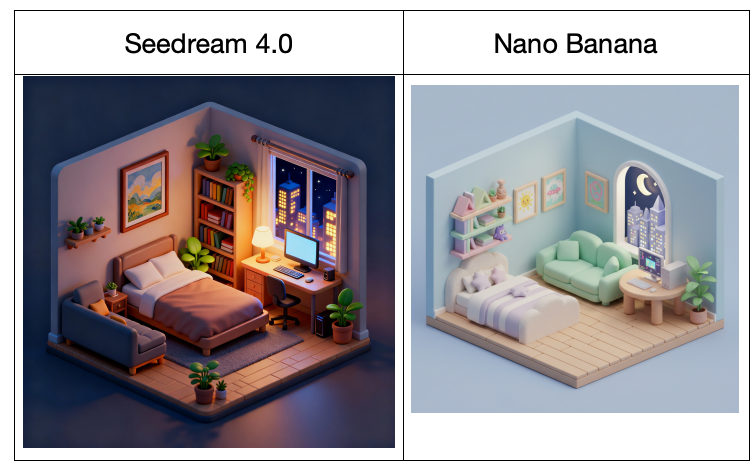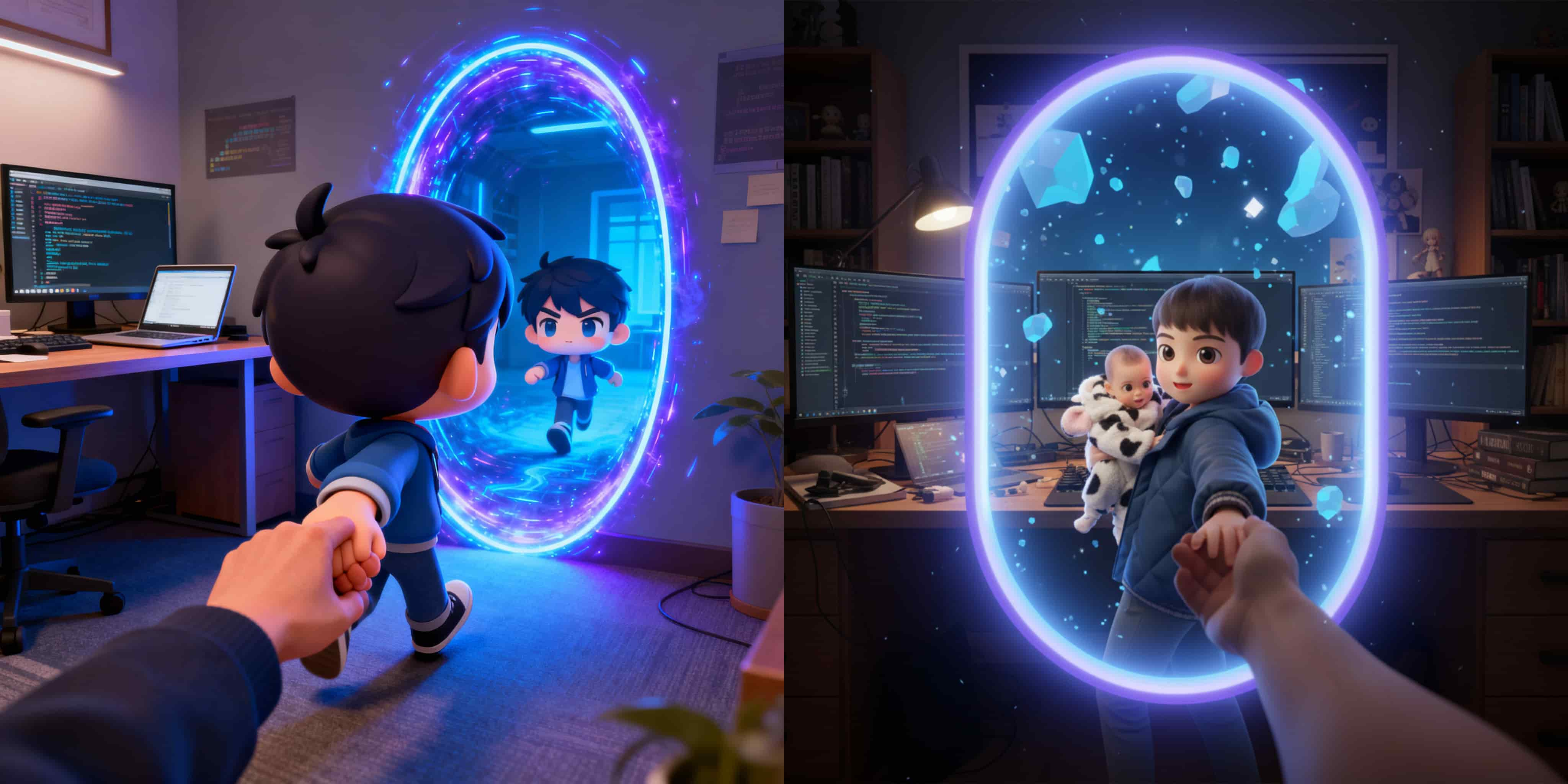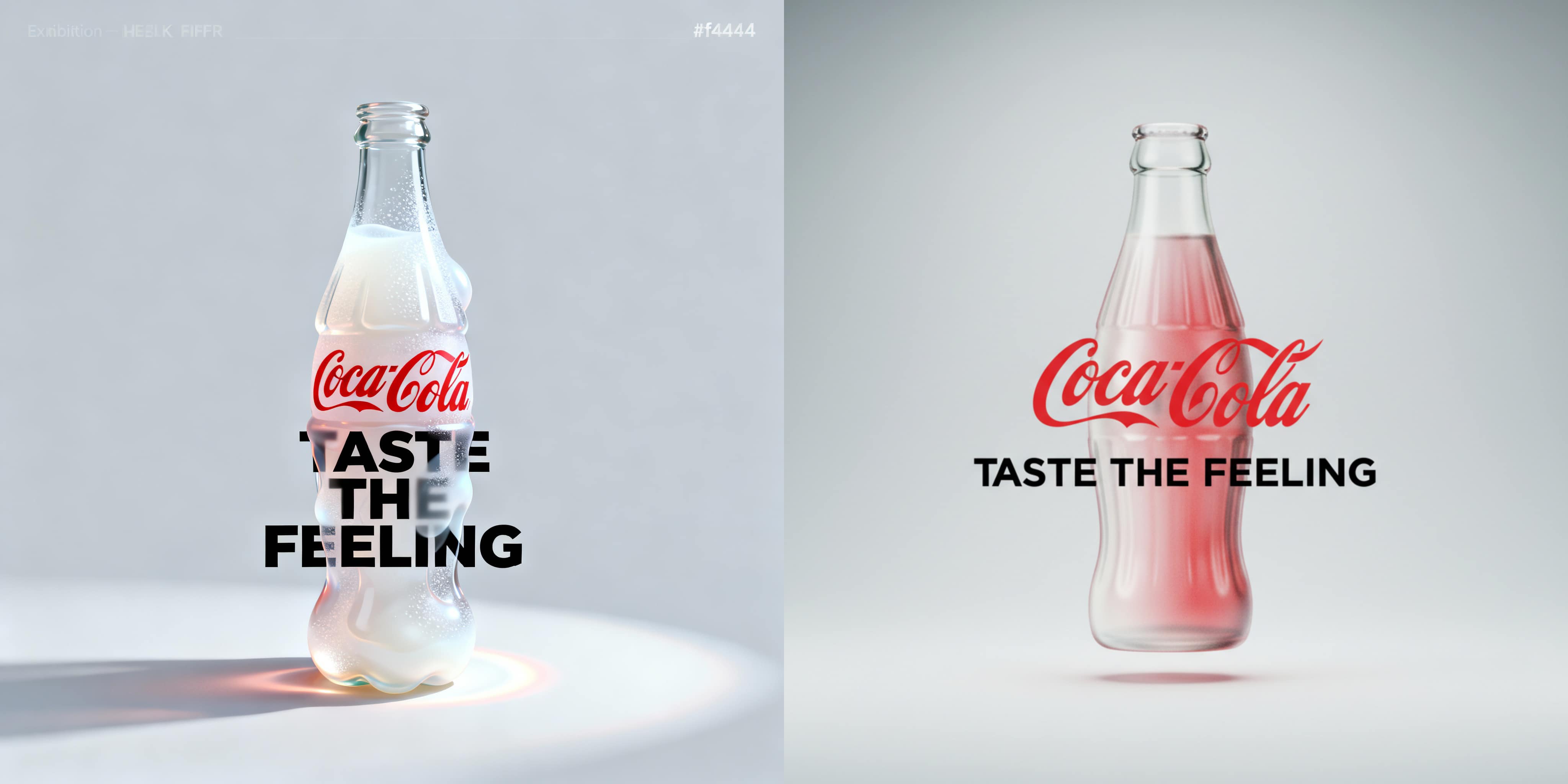Dreamscapes in Miniature: 3D Cozy Room Design Analysis
- Nano Banana
- Seedream 4.0
The “cozy room” genre has become a defining motif of digital art culture, blending domestic intimacy with the visual satisfaction of miniature design. It reflects the modern longing for personal sanctuary — spaces that feel both real and idealized.
For this prompt, the task is not just technical execution but emotional coherence. The room must express warmth and belonging through its materials, lighting, and proportions. By comparing seeDream 4.0 and Nano Banana, we assess how each balances realism with stylization, and how lighting transforms mood in a confined architectural space.
Prompt: Design a cozy bedroom in a cute 3D style with C4D-quality rendering, presented in an isometric view. The room includes a bed, bookshelf, sofa, green plants, a computer desk, and a computer setup. A framed painting hangs on the wall. Outside the window, a nighttime cityscape is visible with glowing buildings and a dark sky. All furniture and objects should have a soft, rounded, stylized design to match the cute 3D aesthetic. Lighting should be warm and inviting, creating a comfortable nighttime indoor atmosphere.

Results & Observations
seeDream 4.0 Output
seeDream 4.0 delivers an exceptional result that balances realism with warmth. The scene feels alive — every element, from the glowing monitor to the lamplight reflection on wood, contributes to a tangible sense of comfort. The color palette leans toward amber and indigo, creating a believable nighttime atmosphere.
The city skyline visible through the window adds narrative depth, contrasting the intimacy of the bedroom with the scale of the outside world. The composition uses layered lighting — desk lamp, ambient bounce, and city glow — to achieve a cinematic gradient. Details like framed art, plant shadows, and rug texture enhance immersion.
This version demonstrates a designer’s intuition for light and narrative, transforming the prompt into a digital interior mood study. It feels like a still from a “slice-of-life” animated film.
Nano Banana Output
Nano Banana’s interpretation focuses on simplicity and color harmony. The pastel palette and clean geometry give it a soft, toy-like appeal, emphasizing the “cute 3D” aesthetic. The lighting is cooler and more uniform, giving the space an airy, dreamlike feel.
The inclusion of decorative elements — framed pictures, curved sofa, and crescent-moon window — reinforces a sense of innocence and whimsy. However, the lighting lacks depth compared to seeDream’s dynamic interplay of shadows and highlights. The overall impression is serene and minimalistic, but it sacrifices some realism and atmosphere for clarity and cleanliness.
Nano Banana’s design excels in approachability and stylized charm, appealing to audiences who favor simplicity and calm over photoreal warmth.
Conclusion
Both versions encapsulate distinct visual philosophies:
- seeDream 4.0 emphasizes emotional realism, using lighting and texture to evoke comfort and narrative presence. Its cinematic precision makes it ideal for architectural visualization, storytelling environments, and mood-driven illustration.
- Nano Banana, on the other hand, embraces conceptual purity and gentle color psychology. Its design language aligns with minimalist animation, lifestyle branding, and toy-inspired aesthetics.
Together, they represent two sides of the same cozy coin — the realistic dream versus the dreamy ideal.

Crossing Realities: The Portal of Dual Worlds
This analysis examines how seeDream 4.0 and Nano Banana interpret the Character Stepping Through Portal prompt — a complex, hybrid scene combining emotional storytelling, environmental contrast, and cinematic lighting. The challenge lies in merging two visual languages: the real-world environment of a programmer’s workspace and the fantastical 3D chibi world beyond the portal. Through this comparison, we explore how each model balances realism, fantasy, and viewer engagement.
By Hudson 一 Oct 08, 2025- Nano Banana
- Seedream 4.0

Brick & Beast: Character Design in LEGO Collectibles
This analysis explores how seeDream 4.0 and Nano Banana interpret a LEGO-style collectible figure prompt combining personality-driven design, museum-style presentation, and toy-scale craftsmanship. The creative challenge lies in merging character storytelling with the precise minimalism of collectible design. Each model was evaluated on aesthetic harmony, material rendering, and the conceptual alignment between the human figure and its companion creature.
By Hudson 一 Oct 08, 2025- Nano Banana
- Seedream 4.0

Glass, Gradient, and Clarity: A Study in Minimalist Futurism
This analysis explores the aesthetic precision and conceptual execution of a minimalist futurist poster task, featuring a Coca-Cola bottle rendered in frosted-glass style. The objective is to evaluate how seeDream 4.0 and Nano Banana handle translucency, typographic integration, and compositional balance under the constraints of high-end commercial design minimalism. The challenge centers on the interplay between form and light—where subtle gradients, glass textures, and typography blur into a harmonious yet futuristic composition.
By Hudson 一 Oct 08, 2025- Nano Banana
- Seedream 4.0
- X
- Youtube
- Discord
